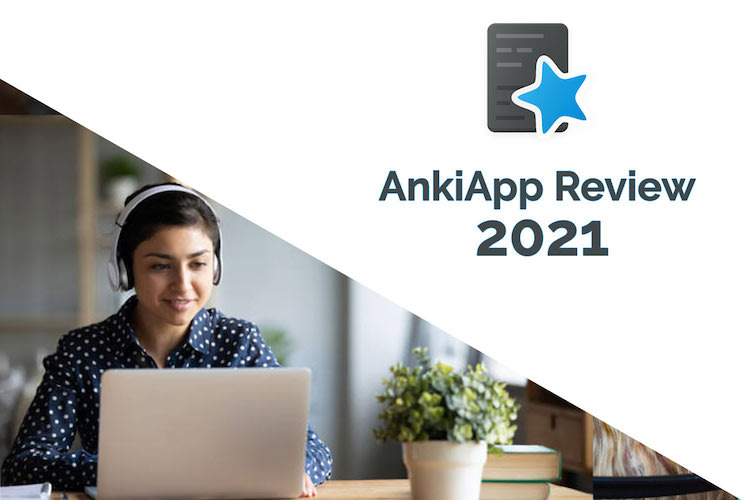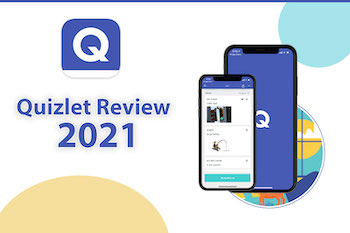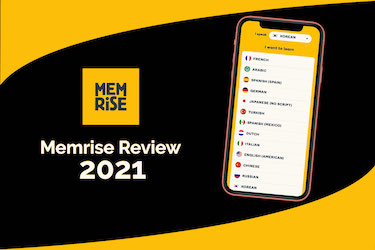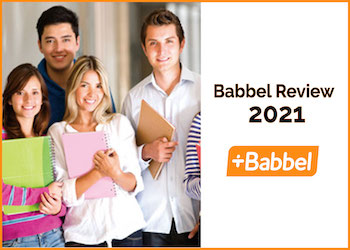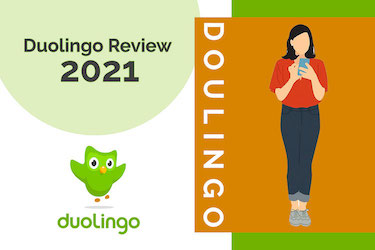Thanks to the efficiency of spaced repetition and the convenience of digital products, it is no surprise that flashcard programs have become a popular method of learning.
One of the most popular flashcards applications currently available is AnkiApp. With flashcard decks available for many languages, it is easily a hot-spot for revision and learning!
And thanks to the app's impressive algorithm developed by an ex-neuroscientist, the creators are confident their software will help anyone learn whatever they desire, but how effective is it really?
What Is AnkiApp?
AnkiApp is a learning software which utilises flashcards to help users retain and recall information. The app was designed by a company called Admium and uses a similar approach to the original ANKI software, but for a much smaller cost!
This, combined with the immense range of flashcards readily available to use, has made AnkiApp a popular choice when it comes to learning just about anything! However, today we will be focussing on how AnkiApp fares, in regard to learning a new language, rather than the content overall.
As of May 2021, it is possible to use AnkiApp on most devices, working on iOS, Android, and web browsers. Meaning users can access any content whether they are at home or on the move, making the app a convenient revision option.
Features Of The Software
While the concept of digital flashcards may seem simple, AnkiApp does have a lot to offer its users!
Downloadable Presets: AnkiApp offers its users over 80 million premade decks, with hundreds, if not thousands, of these covering language learning. Users can also import other premade decks from different sources such as Quizlet, or ANKI!
Meaning there is always the perfect deck for users to learn from.
Create Personalised Decks: Alongside the multitude of premade, and imported decks, AnkiApp also lets users create their own personalised flashcards.
When designing these cards, users have the option to use images, audio, and text with the apps 'custom layouts'. This is great as it combines different senses when learning, which ultimately provides a much more immersive experience.
Categorising Words: When going through the flashcards, users are met with a classification system. They essentially mark themselves based on how well they knew the meaning of a particular word or phrase.
These categories are;
- Fail: If the user got the answer completely wrong, or didn't know it at all, then this is the option they would choose.
- Hard: This is used if they got the answer correct, but really struggled with it.
- Good: For when the user knows the answer, but isn't quite fluent.
- Easy: And lastly, 'easy' is used when the person knows the answer fluently.
This system allows users to learn which words are problematic for them, and which ones they don't need to focus on as much.
'Unique' Algorithm: Relating to the above-mentioned categories, one the team members of AnkiApp designed an algorithm which they describe as 'unique'.
The role of the app's algorithm is to identify the words placed into the 'failed' and 'hard' categories, and feed them back into reviews more often than words which users find easy. Using an algorithm like this makes spaced repetition work seamlessly, as it is programmed to 'know' how regularly these problem words should be shown during learning.
Track Progress: As users work through their flashcards, the app tracks any progress made.
This can be viewed by clicking on the deck library and selecting a particular set of flashcards. This will then open up a snapshot, which tells users things like;
- Their grade.
- How many cards they have reviewed that day.
- The amount of time they have spent reviewing cards.
- How many cards are in that particular deck.
- And more!
By offering this tracker, the developers give users an idea of how much they have learned and how they are improving!
Synchronisation: Not only is AnkiApp available on a variety of platforms, it also offers synchronisation through the cloud.
This allows users to pick up on one device, where they left off on another. Whether it was reviewing new content, or creating their own cards. By offering cloud synchronisation, the developers have made this app incredibly convenient for busy people who just want to pick up and go with their learning. Whether it is for a long session, or to kill ten minutes while they wait in line at the movies.
Study Groups: This is one of AnkiApp's newer features.
The 'study group' feature allows users to create and share flashcard decks with friends and peers. Study groups is an updated version of the app's previous 'sharing' capabilities.
By creating study groups with other users, people can add and create new cards to add to decks, sharing the knowledge and adding a sense of community to learning.
For a concept as simple as flashcards, the developers at AnkiApp have really put in a lot of effort to make the experience engaging and educational.
Advantages and Disadvantages Of Learning Language With AnkiApp
Learning with AnkiApp does offer many benefits, with the sheer amount of content users have access to, being one of the biggest advantages over many dedicated language learning apps. As users are able to import material from a variety of sources, there is almost no limit to how much information is available.
The level of customization AnkiApp allows its users is also incredibly beneficial. Since it gives people an opportunity to tailor their learning in a way that best suits them, whether it is with audio, text, or graphics and pictures. This tailoring and personalization is something that other language apps such as Babbel or Duolingo cannot offer with their set courses.
AnkiApp also benefits from an AI algorithm which was developed by an ex-neuroscientist, which not many other language learning apps can say. Spaced repetition is a well-researched and proven way to learn efficiently, and combining that with an AI which targets the weakest material, users can focus on what they need to learn, rather than waste time on what they know already.
Another way AnkiApp differs from many of the dedicated language learning apps, is that there is no charge for offline access. With many apps, to access their content offline users must purchase a premium membership. Whereas the creators of AnkiApp have opted to give users access to this feature for no additional cost!
The same also goes for the apps cloud syncing feature. Users can access their flashcards from where they left off on different devices, all for zero cost. And when learning is done offline, AnkiApp will automatically begin syncing when it reconnects to Wi-Fi or data.
By including these features in their app, Admium have given their users the opportunity to learn whenever, wherever and however suits them best.
But as is the case with any learning software, AnkiApp does have its disadvantages.
One of the biggest ones being, the huge amount of content. While this is great and one of the benefits of AnkiApp, it can also serve as a disadvantage. When searching for flashcards relating to a particular language, the results produce a wide variety of premade decks. Making it difficult to find a starting point, especially if you are new to the language.
For example, when searching for beginner German flashcards, users are met with a multitude of decks ranging from verbs and nouns, to sentences, and even some CEFR grades (A1, A2, B1, B2 etc) For anyone trying to use the app to learn language this can all be a bit overwhelming.
Which leads into the second disadvantage of learning with AnkiApp, and that is the lack of structure available. Apps which are dedicated to language learning, such as Busuu, Duolingo or Babbel, offer an easy-to-follow structure which teaches users a variety of vocabulary, grammar and useful phrases. But users of AnkiApp have to figure out a lesson structure for themselves, and this is another thing that new learners may struggle with.
Another aspect of learning a new language which can be lost with AnkiApp, is the explanations behind the words or phrases being taught. Take Babbel's German course for example, it teaches users how to introduce themselves casually, or formally, and explains the different contexts each version is used in, including when it is best to use one or the other.
Flashcards are designed to hold short and important snippets of information, and can often lack the context and nuances found within a language.
Using a flashcard app like AnkiApp to help with learning a language can be a great idea, and hosts many benefits. Though it may work best in conjunction with other apps which can offer more structure and guidance, especially for anyone completely new to their target language!
AnkiApp's Prices
As of writing this review in May 2021, AnkiApp is available on all platforms with no cost.
Users are not required to purchase a premium membership or full version of the app in order to gain access to every feature of the app. Making it an incredible resource for anyone who enjoys using flashcards when learning.
Though something to consider, when reading through the reviews in the Apple App Store, it appears that some users mention purchasing the app for £24. Meaning the app may not be free permanently, so anyone considering using this app may want to download it sooner rather than later!
All in all, when compared to the costs of other apps, AnkiApp is great value for what you get! With other apps charging for things like full access and removing ads. AnkiApp offers a clean interface free of distractions, and an immense amount of content without asking its users for a penny.
Other Apps To Learn Languages With
There are many other apps which are popular among people who are learning a new language, the ones below differ from AnkiApp. These apps are specifically designed to help with learning a new language, whereas AnkiApp can be used for just about any topic, and languages are just a small fraction of what they offer.
Some of the most popular apps for learning languages include;
Duolingo: Duolingo offers users full access to its content for free. This app focuses on gamifying learning, by offering scoreboards, competitions, and gems which can be used in a store to purchase items (e.g., streak freezes, bonus courses and more!).
Babbel: Unlike Duolingo, Babbel requires a paid membership before users can access the app's content. However, once users have that membership they are given access to a variety of courses which teach everything from spelling to pronunciation!
Memrise: Founded by a neuroscientist and a Grand Memory Master, Memrise has proven to be a great app for learning languages with. Utilising spaced repetition and clips of native speakers to efficiently teach 24 different languages.
Conclusion
Overall, AnkiApp is an invaluable tool that has huge potential for helping just about everyone master the languages they are learning. With an ex-neuroscientist at the helm of its smart algorithm, users can trust that the app will identify their weaknesses and help them strengthen these skills, to achieve fluency.
However, because of the sheer velocity of the content available, and short snippets of information rather than detailed explanations, people new to learning languages may find it overwhelming and struggle. Even advanced learners may have difficulty in deciding which deck they wish to practice with.
As such, AnkiApp would likely work best as a companion app to a more structured software, such as Duolingo or Babbel. It would also work well as a revision tool, whether it is for personal purposes, work, or even school.

